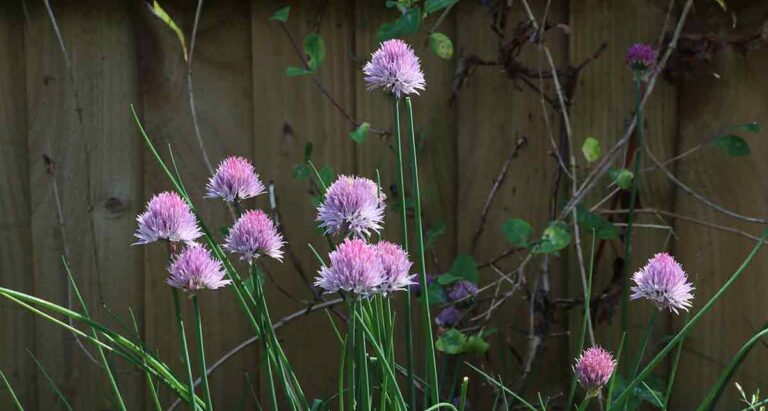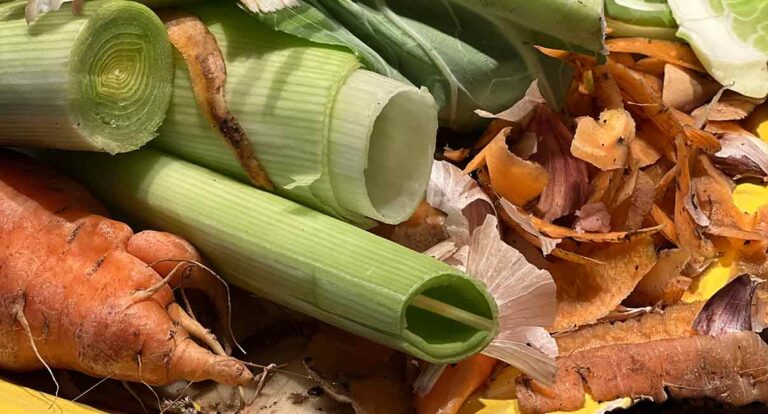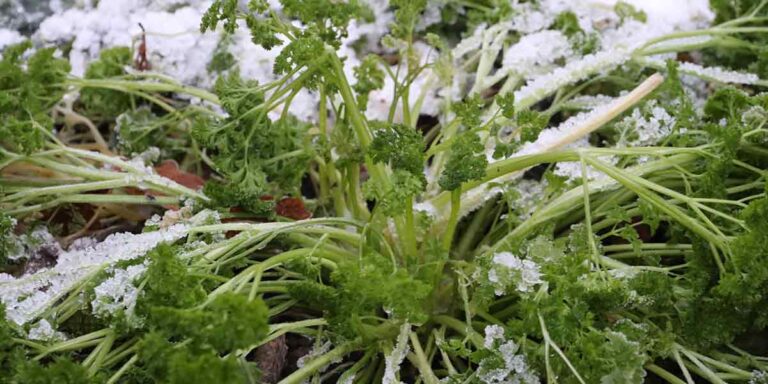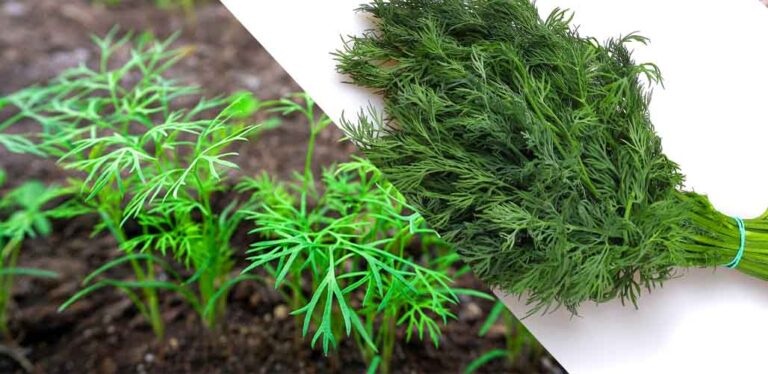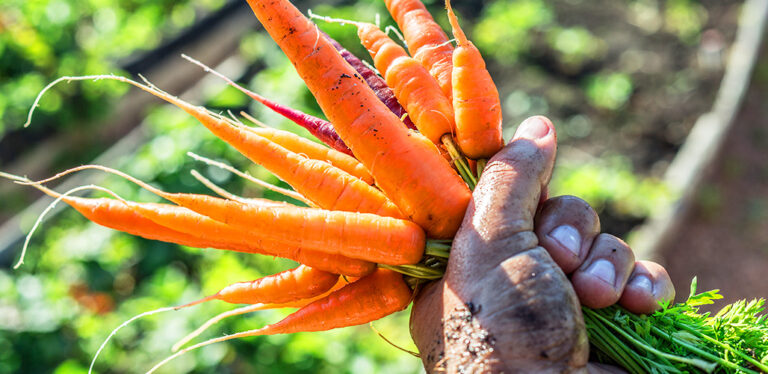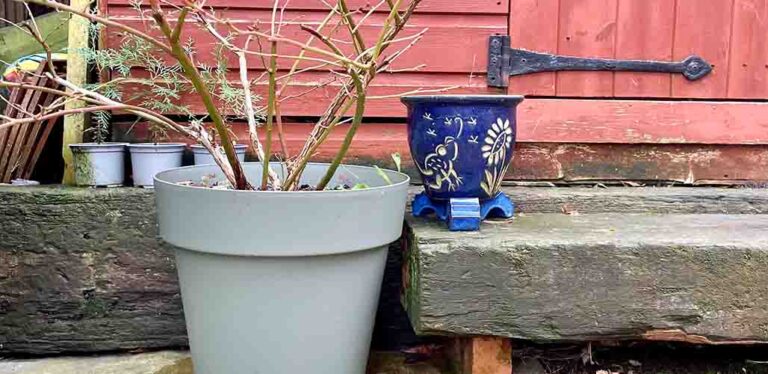How To Get Started With Basil
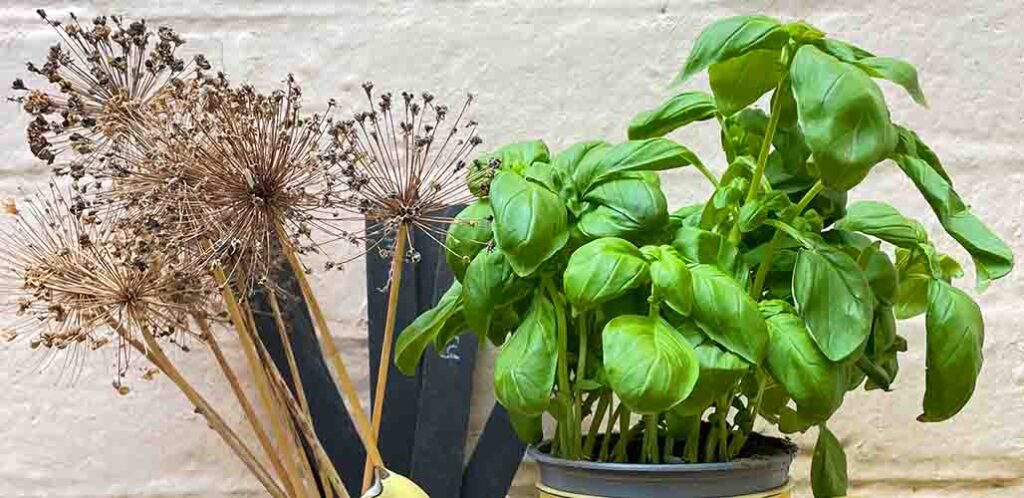
Basil is an annual herb that loves long, sunny days and warm weather, so for me, sowing basil seeds is also an exciting milestone that means summer is just around the corner!
Basil is one of the easiest herbs to grow, and definitely one of the most hardworking too. It is an essential component of Italian, Asian and Mexican cuisine. And it can also be used to make tasty teas, or grown as an attractive ornamental plant to attract beneficial insects like bees into your garden.
To appreciate just how versatile basil plants are, you really need to try growing your own. So here’s how to get started with basil in your garden!
Contents
- Basil basics
- Popular basil varieties to grow yourself
- Growing conditions for happy basil
- Getting started with basil – sowing and growing
- How to get started with basil by dividing store-bought plants
- Caring for basil plants
- Basil pests and diseases
- Harvesting and storing your crop
Basil basics
Basil is easy to grow from seed anywhere warm, with lots of sunshine. In most places you can grow it all year round on a sunny window sill. But to grow it outside, you’ll need to wait until late spring or early summer.
Despite technically being a short lived perennial with a lifespan of 2 – 4 years, most gardeners grow it as an annual. This means sowing fresh seeds each spring, and letting the plants die off with the arrival of the first frosts in fall.
Fun facts about Basil
- Used in food: Basil is originally a tropical plant from India. Its distinctive fragrant taste with hints of clove has made it popular all over the world, and now it’s a staple of all kinds of dishes, from pasta sauces to puddings, and tomato salads to teas.
- Used in medicine: Besides being an ingredient in food and drink, basil was also used historically as a natural remedy for belly aches. Its essential oil is antiviral, antifungal, antibacterial and anti-infammatory (but it’s no substitute for seeing a doctor when you’re sick!)
- Used in perfume & culture: Basil oil has also been used as an ingredient in perfume, and an insect repellent. And it has special cultural significance for some people too. For example in the Greek orthodox church, sprigs of basil are used to bless the congregation with holy water.
Popular basil varieties to grow yourself
If you’re only used to seeing the basil sold in grocery stores and used by restaurants, the number of other varieties might come as a surprise to you! Just could choose:
- Cinnamon basil. Also known as Mexican spicy basil, cinnamon basil is a widely used ingredient in Mexican cuisine. The leaves contain methyl cinnamate, which makes them taste like cinnamon.
- Genovese. Genovese is the classic basil, as most people recognize it. Use it for an authentic flavor in Italian dishes.
- Kapoor Tulsi. Also known as ‘spice basil’, the flavor of Kapoor Tulsi has hints of chocolate and coffee. It’s a popular addition to curries, and also for making tea.
- Lettuce leaf. From a small variety to a big one! Lettuce basil grows huge wrinkly leaves up to 4″ long. It’s great for making pestos, paninis and sandwiches, and surprising lunch guests with.
- Minette. Minette is an unusual basil which forms a neat ball about 10” across. It has small leaves, and white flowers, and it’s a great choice for containers, and modern, urban or architectural gardens.
- Mrs Burns Lemon. Another white flowering variety, but this one is large and bushy. The leaves have a citrussy perfume, so try them in salads, with fish, or in cold summer drinks.
- Persian basil. Persian basil has mottled green and purple leaves, and lilac flowers. It’s a great choice for small gardens because it is truly beautiful to look at, as well as useful. The flavor is more complex than other varieties, being both spicy and citrussy, as well as basil-y.
- Thai basil. Thai basil has small leaves, with a slightly sweet flavor that has hints of anise and cloves. If you like Thai cooking, this is exactly what you need to take your dishes to the next level.
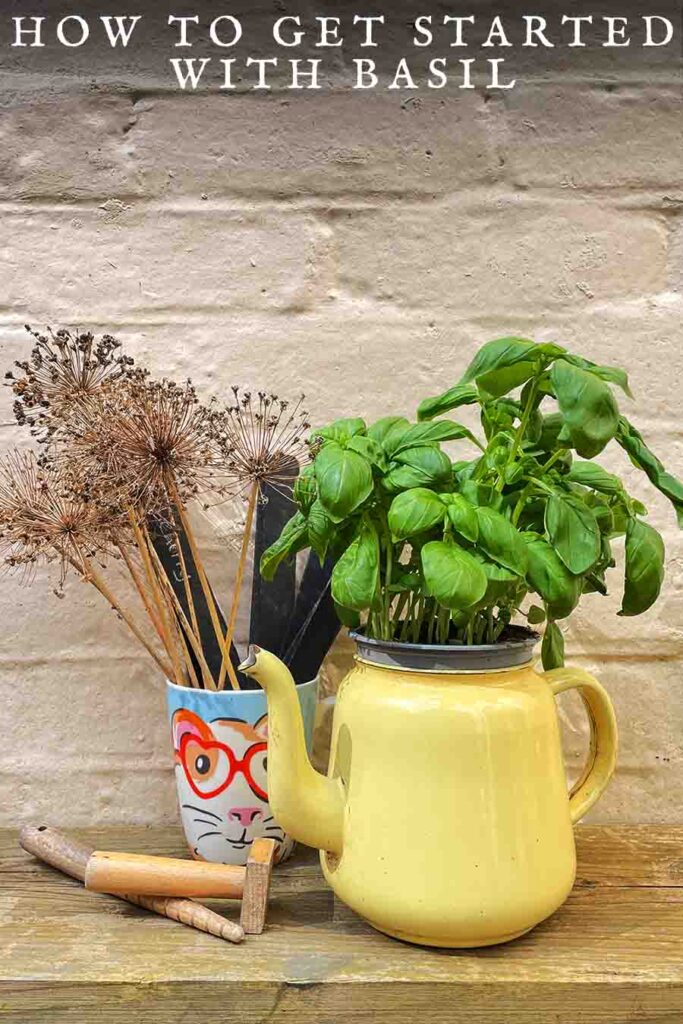
Growing conditions for happy basil
Basils like hot, sunny conditions. On the other hand, they dislike shaded areas, damp air and cold wind. If you live somewhere with warm summers, you can grow basil outdoors. They prefer a sheltered spot where they won’t get blown about, such as against a sunny wall. If you live in a cooler regions, or your garden is very exposed, they will be happier in a container on a sunny windowsill indoors, or in a greenhouse. Since they need at least 6 hours of direct sunlight a day, if your garden is heavily shaded you will also achieve better results growing them indoors under a grow light.
Many basils are quite tolerant of quite poor soils, and need little feeding, but they are quite picky about water. Their roots like plenty of access to moisture, but their leaves are very prone to mold, rots and fungal infections in high humidity. So ideally you’ll find a way to keep their roots damp without getting their leaves wet (I’ve got some suggestions in a moment). Basil grows well with other herbs like oregano, chives and parsley, which also like damp but not wet soil, and heaps of sunshine. They are also a classic companion plant for tomatoes.
How to get started with basils – sowing and growing
You can sow basil all year round for growing on a sunny windowsill. Or, wait until spring to sow seeds which will eventually be moved outdoors. Getting basil started is easier indoors, because it is warmer, you can more readily control how wet the potting mix is, and the young seedlings won’t get munched by slugs or snails. But if you prefer you can also sow basil seeds directly into the ground in summer, and the plants will be full sized 3 months later.
Basil seeds needs warmth and light to germinate, so sow them onto the surface of damp potting compost with just a thin sprinkle more compost or vermiculite on top. I sow my seeds into empty fruit trays from the grocery store. Then I place them in a propagator or even just in a large sandwich bag to stop them drying out before the seedlings emerge. Germination takes 2 to 3 weeks.
Potting on or planting out
Once the seedlings have 2 – 4 true leaves, it’s time to move them on. Transplant each seedling into a 3” pot filled with potting mix, and water gently to settle the soil around their roots. Once the outside night time temperature is consistently above 55°F, start hardening them off, ready to plant out in their final location. Or wait until they fill their baby pot, then move them into a 6” pot to grow to maturity on a window sill or sunny patio. Alternatively, you can buy young plants from nurseries which are already hardened off and ready to plant out in your garden.
Basil plants in the ground need should be planted about 12” apart. They like a bit of space around them to ensure airflow, which protects them from fungal diseases. Once established, they will tolerate temperatures down to 35°F, but they more or less stop growing below 50°F. After the first frost they will turn black and die back, but container-grown plants bought inside before the frost will keep producing new leaves all winter.
Dividing store bought basil plants
Another option is to divide grocery store bought living basil pots. In fact the photo above is some basil I’ve bought from the grocery store for this very purpose! Grocery store basil isn’t the same as nursery-raised plants. Grocery store pots contain several individual seedlings which have been grown in tightly engineered conditions to produce lots of leaves as quickly as possible. But, their root ball is immature relative to the amount of plant above the surface, and of course, having so many seedlings in one pot means there isn’t enough space for them all to reach maturity.
So, I’m going to gently divide them, and put them singly or in pairs into their own pots, using a soil- or loam-based compost that isn’t too rich in nutrients. Then I’ll keep them somewhere warm and bright, but not too hot or intensely sunny, until the roots have had a chance to develop. Watch this space for more photos of how they turn out!
Caring for basil plants
Basil grown in the right conditions is relatively unfussy and low maintenance. Here are a few brief notes on watering, feeding, and pruning:
Watering
Basil likes lots of moisture around their roots, but their leaves prefer to stay dry. Wet leaves are prone to mold and other fungal infections. So, water basil plants in open ground first thing in the morning, so the leaves are dry by evening. Water as close to the base of the plant as you can. The best way to water basil in containers is by standing them in a saucer of water.
Feeding
Lots of basil varieties grow quite happily without being fed at all, even in poor soil. Yellow leaves, which usually signify lack of nutrients in other plants, are more usually an indication that basil is stressed by drought or too much cold wind. It’s important to note that if you grow basil alongside tomatoes, tomato fertilizer will encourage the basil to start making flowers. Which leads us neatly on to pruning…
Pruning
Pruning basil isn’t essential, but once a basil stem starts producing flowers, the plant will also stop producing as many new leaves. It will also redirect essential oil production to the flowers, to attract pollinating insects. This means the leaves it already has are going to start losing their flavor. Pinching off the flower buds before they can mature will encourage your plant to keep producing foliage, and keep its flavor concentrated in the leaves. To get the best of both worlds, I prune the flowers off some of my basil plants so that they stay productive for the kitchen, and let the rest flower so the bees can enjoy them. If productivity is important to you, focus on growing Genovese varieties, which are slow to produce flowers.
Basil pests and diseases
Everything in the garden has it’s enemies, and some common foes of basil plants are:
- Fusarium wilt
- Gray mold
- Damping off
- Slugs and snails
- Spider mites
Fusarium wilt, gray mold, and damping off
Fusarium wilt is a fungal disease which blocks water movement up plants’ stems, causing them to die off. Gray mold is another fungal diseases, which as the name suggests, causes gray mold to form on plants’ leaves and stems. And damping off is a fungus-like infection that specifically affects young seedlings and causes them to collapse. All three infections invade basil when the soil is too wet, or humidity around the leaves is too high, and the airflow is low. None of them can be treated or reversed, so protect your basil plants instead by leaving plenty of space between them, and watering the soil in moderation, without soaking the leaves when you do.
Slugs and snails
All gardeners are familiar with these slimy pests! Slugs and snails love tender young basil seedlings, which is why most growers start them off indoors. Alternatively, surround outdoor sowings with sharp grit to keep greedy gastropods at bay. Slugs and snails are attracted to damaged on plants, so once plants are established, as long as you keep them watered and pinch off any leaves that get squashed or broken, they should be safe.
Spider mites
Spider mites are tiny sap suckers. They love the same hot, dry conditions that basil does, so check the undersides of leaves regularly for their tell-tale silk webbing. The best way to get rid of them is to wash them off with a hose early in the day, so the leaves can dry out again before nightfall.
Harvesting and storing your crop
Once established, basil plants will keep growing and producing new leaves right up until the first frosts. Harvest the leaves as you need them, since they don’t store very well once picked. Leftover stems can be kept in a glass of water at room temperature for a few days. If you’re growing basil faster than you can use it, or you want to save some of it for flavoring dishes in winter, try:
- Hanging bunches of basil upside down in a warm spot to dry, then crumble them into Ziploc bags.
- Chop fresh leaves and pack them into ice cube trays, then top them up with olive oil and freeze.
- Make big batches of pesto, which freezes really well.
Basil flowers can also be picked and added to salads or aromatic summer drinks – they have an intensely basil flavor. Even the seeds can be collected and saved for next year, or made into desserts. They are mucilaginous, which means that when you soak them in water, the seed coating forms a thick gel. Soaked basil seeds are an essential ingredient in the pudding dish falooda.
How to get started with basil – summary
So, there is way more to basil than just the trays of Genovese leaves you’ll find at the grocery store! Growing your own basil from seed is easy to do, and you can enjoy and compare all kinds of varieties. I love to grow Genovese basil every year for cooking and making pesto with. And each year I try to experiment with an unusual variety for decorating salads and summer desserts with, and also adding to flower beds as a flowering plant for insects. They really are some of the hardest working plants I have! I’d love to hear which basil you grow, and what you use it for, in the comments box down below.

